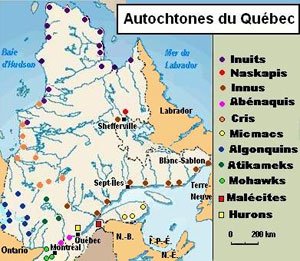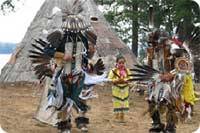Action Carbone, Terra Preta: Black is the New Green, 2010. [disponible en ligne] http://www.actioncarbone.org/projet.php ?typ =ck&id =30 consulté le 3 mars 2010.
Agência Nacionalde Águas (ANA), Recursos hídricos no Brasil. 2005. [disponible en ligne]. http://www.internationalrivers.org/en/latin-america/amazon-basin/principal-dams-brazil ?size =_original. Consulté le 10 août 2010.
Almeida C., « Sugarcane ethanol : Brazil’s biofuel success », Science and Development Network, 6 décembre 2007. [disponible en ligne] http://www.scidev.net/en/features/sugarcane-ethanol-brazils-biofuel-success.html . Consulté le 12 décembre 2009.
Andreae M. O, Rosenfeld D., Artaxo P., Costa A. A., Frank G. P., Longo K. M., Silva-Dias M. A. F., « Smoking rain clouds over the Amazon», Science303, 1337-1342, 2004.
Asner G. P., Knapp D. E., Broadbent E. N., Oliveira P. J. C., Keller M., SilvaJ. N., « Selective logging in the Brazilian Amazon », Science 310, 480 – 482, 2005.
Ballvé M., « Brazilian president’s push for dams in Amazon basin stirs controversy », World Politics Review, 20 août 2007 [disponible en ligne] http://www.worldpoliticsreview.com/articles/1046. Consulté le 12 décembre 2009.
Butler R. A., « Deforestation in the Amazon », Mongabay, 2009. [disponible en ligne] http://www.mongabay.com/brazil.html. Consulté le 12 décembre 2009.
Carbon Finance Unit (CFU), « Brazil : Plantar sequestration and biomass use », 2008 [disponible en ligne] http://wbcarbonfinance.org/Router.cfm ?Page =Projport&ProjID =9600. Consulté le 12 décembre 2009.
Chagnon F. J. F., Bras R. L., Wang J., « Climatic shift in patterns of shallow clouds over the Amazon », Geophysical Research Letters 31, L24212, doi:10.1029/2004GL021188. 2004.
Chagnon F. J. F., Bras R. L., « Contemporary climate change in the Amazon », Geophysical Research Letters 32, L13703, doi:10.1029/2005GL022722. 2005.
Cochrane M. A., Laurance W. F., « Fire as a large-scale edge effect in Amazonian forests », Journal of Tropical Ecology 18, 311-325, 2002.
Cooley S. R., Yager P. L., « Physical and biological contributions to the Western Tropical North Atlantic Ocean carbon sink formed by the Amazon River Plume », Journal of Geophysical Research, 111, C08018, doi:10.1029/2005JC002954. 2006.
Cowling S. A., Shin Y., « Simulated ecosystem threshold responses to co-varying temperature, precipitation and atmospheric CO2 within a region of Amazonia », Global ecology and biogeography 15, 553-566, 2006.
Cox P. M., Betts R. A., Jones C. D., Spall S. A., Totterdell I. J., « Acceleration of global warming due to carbon-cycle feedbacks in a coupled climate model », Nature 408, 184 – 187, 2000.
Cox M. P., Betts R. A., Collins M., Harris P. P., Huntingford P., Jones C. D., « Amazonian forest dieback under climate-carbon cycle projections for the 21st century », Theoretical and Applied Climatology 78, 137–156, 2004.
Da Silva J. M. C, Rylands A. B., Da Fonseca G. A. B., « The Fate of the Amazonian Areas of Endemism ». Conservation Biology 19, 689–694, 2005.
Day J. A., Davies B. R., « The Amazon river system », In The ecology of river systems, sous la dir. de B. R. Davies, K. F. Walker, Chapitre 8. p. 289-317. Dordrecht, Pays-Bas: Dr W. Junk Publishers, 1986.
De Siqueira O. J. F., Farías J. R. B., Sans L. M. A., « Potential effects of global climate change for Brazilian agriculture: applied simulation studies for wheat, maize and soybeans », In Implications of Climate Change for International Agriculture: Crop Modeling Study, sous la dir. de C. Rosenzweig, A. Iglesias, EPA 230-B-94-003, U.S. Environmental Protection Agency, Washington, DC, USA, 1994.
Duchemin É., Lucotte M., St-Louis V., Canuel R., « Hydroelectric reservoirs as an anthropogenic source of greenhouse gases », World Resource Review14, 334-353, 2002.
Energy Information Agency (EIA), « Brazil Energy Data, Statistics and Analysis - Oil, Gas, Electricity, Coal ». 2009 [disponible en ligne] http://www.eia.doe.gov/emeu/cabs/Brazil/pdf.pdf.Consulté le 12 décembre 2009.
Enfield D. B., Mayer D. A., « Tropical Atlantic sea surface temperature variability and its relation to El Nino-Southern Oscillation », J. Geophys. Res.102, 929-945, 1997.
Environmental News Service (ENS), « Brazilian government shutters Cargill soy plant port », ENS newswire, 29 Mars 2007.
Fase/World Rainforest Movement (WRM), « Brazil: An overview of monoculture eucalyptus plantations », WRM Bulletin 116, mars 2007.
Fearnside P.M., « Plantation forestry in Brazil: the potential impacts of climatic change », Biomass and Bioenergy 16, 91–102, 1999.
Fearnside P. M., « Soybean Cultivation as a Threat to the Environment in Brazil », Environmental Conservation 28, 23-28, 2001.
Fearnside P.M., « Greenhouse-Gas Emissions from Amazonian Hydroelectric Reservoirs: The Example of Brazil’s Tucuruí Dam as Compared to Fossil Fuel Alternatives », Environmental Conservation 24, 1, 2007.
Forestsandthe European Union Ressource Network (FERN), « Brazilian groups urge EU companies not to buy carbon credits from eucalyptus plantation », FERN News release, 27 mars 2003.
Friend A. D., Stevens A. K., Knox R. G., Cannell M. G. R., « A process based, terrestrial biosphere model of ecosystem dynamics (hybrid v. 3.0) », Ecological Modelling 95, 249–287, 1997.
Gagnier A., « Les autorités brésiliennes ne parviennent pas à freiner la déforestation de l’Amazonie », Le Monde, 5 mai 2008.
Giannini A., Chiang J. C. H., Cane M. A., Kushnir Y., Seager R. et al., « The ENSO teleconnection to the tropical Atlantic Ocean: Contributions of the remote and local SSTs to rainfall variability in the tropical Americas », J. Climate 14, 4530-4544, 2001.
Git Forestry Consultings, « Eucalyptologics », 2001-2008. [disponible en ligne] http://git-forestry-blog.blogspot.com/2008/02/eucalyptus-monocultures-taking-over.html. Consulté le 22 décembre 2009.
Hall A., Better RED than dead: paying the people for environmental services in Amazonia, Phil. Trans. R. Soc. B 363, 1925–1932, 2008.
Hare W., « Assessment of Knowledge on Impacts of Climate Change – Contribution to the Specification of Art. 2 of the UNFCCC », WBGU, Potsdam, Berlin, 2003.
Heckenberger M. J., Kuikuro A., Kuikuro U. T., Russell J. C., Schmidt M., Fausto C., Franchetto B., Amazonia 1492: Pristine Forest or Cultural Parkland? Science 301, 1710 – 1714, 2003.
Instituto Brasileirode Geografiae Estatística (IBGE), « Diretoria de Pesquisas, Coordenação de Agropecuária, Pesquisa da Pecuária Municipal 2003 e 2004 », 2004.
Intergovernmentary Panelon Climate Change (IPCC), « IPCC Third Assessment Report: Climate Change 2001 », 2001.
Intergovernmentary Panelon Climate Change (IPCC), « IPCC Fourth Assessment Report: Climate Change 2007 », 2007.
Koren I., Kaufman Y. J., Remer L. A., Martins J. V., « Measurement of the effect of Amazon smoke on inhibition of cloud formation », Science 303, 1342 – 1345, 2004.
Laurance W. F., Cochrane M. A., Bergen S., Fearnside P. M., Delamônica P., Barber C., D’angelo S., Fernandes T., « The Future of the Brazilian Amazon », Science 291, 438-439 (2001).
Laurance W. F., Williamson G. B., « Positive feedbacks among forest fragmentation, drought, and climate change in the Amazon », Conservation Biology 15, 1529-1535, 2001.
Lewinsohn T. M., Prado P. I., « How many species are there in Brazil? », Conservation Biology 19, 619-624, 2005.
Lilley S., « Paving the Amazon with Soy: World Bank Bows to Audit of Maggi Loan », Special to CorpWatch, 16 décembre 2004.
Mann C. (a), The good earth: Did people improve the Amazon basin? Science287, 788, 2000.
Mann C. (b), Earthmovers of the Amazon. Science 287, 786-789, 2000.
Marengo J., « Long-term trends and cycles in the hydrometeorology of the Amazon basin since the late 1920s », Hydrological Processes 23, 3236-3244, 2009.
Margulis S., « Causes of Deforestation of the Brazilian Amazon », World Bank Working Paper No. 22. Washington, D.C.: The World Bank, 2004.
Miles L., Grainger A., Phillips O., « The impact of global change on tropical biodiversity in Amazonia », Global Ecology and Biogeography 13, 553-565, 2004.
Nepstad D., Carvalho G., Barros A. C., Alencar A., Capobianco J. P. et al., « Road paving, fire regime feedbacks, and the future of Amazon forests », Forest Ecology and Management 154, 395-407, 2001.
Nepstad D., Mc Grath D., Alencar A., Barro A. C., Carvalho G., Santili M., Vera Diaz M., « Enhanced : Frontier governance in Amazonia », Science 295, 629 – 631, 2002.
Nepstad D., Soares-Filho B., Merry F., Moutinho P., Oliveira Rodrigues H. et al., « The costs and benefits of reducing carbon emissions from deforestation and forest degradation in the brazilian Amazon », The Woods Hole Research Center, Falmouth, USA, 26 p., 2007.
PabónJ. D., « Búsqueda de series de referencia para el seguimiento de la señal regional del calentamiento global », Cuadernos de Geografía 2, 164–173, 1995.
Quintana-Gomez R. A., « Trends of maximum and minimum temperatures in northern South America », Journal of Climate 12, 2104–2112, 1999.
Rosenzweig C., Hillel D., « Climate change and the global harvest: Potential impacts of the greenhouse effect on agriculture », Oxford University Press, Oxford, UK, 324 pp. , 1998.
Rother L., « Relentless foe of the Amazon jungle: soybeans », New York Times, 17 septembre 2003.
Saleska S. R., Didan K., Huete A. R., Da Rocha H. R., « Amazon Forests Green-Up During 2005 Drought », Science 318, 612, 2007.
Samanta A., Ganguly S., Hashimoto H., Devadiga S., Vermote E., Knyazikhin Y., Nemani R. R., Myneni R. B., « Amazon forests did not green-up during the 2005 drought », Geophys. Res. Lett. 37, doi:10.1029/2009GL042154, 2010.
Sioli H., « The effects of deforestation in Amazonia », The Geographical Journal 151, 197-203, 1985.
United Nations’ Development Program (UNDP), Latin American and Caribbean CDM projects, 1st september 2008. [disponible en ligne] http://www.unep.org/pdf/CDM_projectsinlatinAmerica.pdf consulté le 20 décembre 2009.
United Nations’ Environmental Program (UNEP), « Global Environment Outlook », 2008. [disponible en ligne] http://geodata.grid.unep.ch/mod_table/table.php consulté le 22 novembre 2009.
United Nations’ Framework Conventionon Climate Change (UNFCCC), « Greenhouse Gas Inventory Data », 2008. [disponible en ligne] http://unfccc.int/ghg_data/items/3800.php. Consulté le 22 novembre 2009.
United Nations’ Framework Conventionon Climate Change (UNFCCC), a. Project 0667 : Braço Norte III Small Hydro Plant, 2010. [disponible en ligne] http://cdm.unfccc.int/Projects/DB/SGS-UKL1158861297.48 consulté le 2 mars 2010.
United Nations’ Framework Conventionon Climate Change (UNFCCC), b. Project 0668: Braço Norte IV Small Hydro Plant, 2010. [disponible en ligne] http://cdm.unfccc.int/Projects/DB/SGS-UKL1158864605.67consulté le 2 mars 2010.
Viana V. M. Bolsa Floresta (Forest Conservation Allowance), an innovative mechanism to promote health in traditional communities in the Amazon. Estud. av. vol. 22 no.64, 2008
Wallace S., « Farming the Amazon: Last of the Amazon », National Geographic, Janvier 2007.
White A., Cannel M. G. R., Friend A. D., « Climate change impacts on ecosystems and the terrestrial carbon sink: a new assessment », Global Environmental Change 9, 21–30, 1999.
Woods R., « Huge hydro plant planned for Amazon », Energy Tribune, 17 janvier 2008.
World Commissionon Dams (WCD), « The Report of the World Commission on dams », WCD, Cape Town, South Africa, 1999.
Zeng N., Yoon J.-H., Marengo J. A., Subramaniam A., Mariotti C. A. A., Neelin J. D., « Causes and Impact of the 2005 Amazon Drought », Environ. Res. Lett. 3, 014002, doi : 10.1088/1748-9326/3/1/014002., 2008.
































